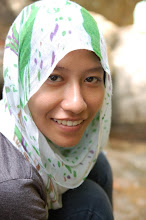In today's world, education is not what it is supposed to be. Education is preparing a person to face everyday life. Education today doesn't prepare one for the normal problems faced by a person in life...although, I'm not saying that they don't prepare you for life in schools. So our education system has to change fully, and only teach what is necessary. Today's education system is challenging but needs some changes. Today's education produces only money making machines. We are imparting theoretical knowledge based education. We have to make the children more aware on socialness. Even the information being given is very much non uniform in all the states. The syllabus of all the states have to be made more uniform so that everyone gets equal opportunity in everything. I think that life without education is a waste. It is worthless, in today's world. Education in the country is consisting of pre-school, primary, secondary, tertiary and postgraduate. Beginning in 2003, the government initiated the use of English as a standard of teaching in the entire science and mathematic subjects. The Kementerian Pelajaran Malaysia is responsible from pre-school up to secondary stage of education while, the Ministry of Higher Education is in-charge in tertiary education in 2004. In pre-school, the government has no prescribed curriculum except a proper training which requires and certification for professors and principals before they may manage a pre-school. Primary education comprises of 6 years of education. It starts at age 7 and finishes at the age of 12 years old. Students in national schools are mandatory to go through a standardized test called Primary School Evaluation or Ujian Pencapaian Sekolah Rendah before graduating from primary education. The students must take the examination for Malaysian Certificate of Education before graduating from secondary. Uniforms in public school are required for all students nationwide. The required uniforms for males are collared shirt with long or shorts pants and for female a collared shirt and knee-length skirt. Generally, the students are expected to black or white shoes and white socks whereas ties are included in particular dress codes. student in Malaysia can choose to study either locally run programmers, twinning academic programmers, vocational, technical or skills training. The country has 10 local public universities, 6 private, 1 international university and more than 500 Public Higher Educational Institutions. It is open to every individual in the country and offers postgraduate and undergraduate studies. Private educational institutions are obligatory to register with the Ministry of Education. Education in Malaysia is overseen by two government ministries, the Ministry of Education for matters up to the secondary level, and the Ministry of Higher Education for tertiary education. Although education is the responsibility of the federal government, each state has an Education Department to help coordinate educational matters in their respective states. The Malaysian education system encompasses education beginning from pre-school to university. Pre-tertiary education (pre-school to secondary education) is under the jurisdiction of the Ministry of Education (MOE) while tertiary or higher education is the responsibility of the Ministry of Higher Education (MOHE). The vision of the Government is to make Malaysia a centre of educational excellence. In total, the 12 years of school education serves as the basic entry requirement into Year One of a bachelor’s degree programme in higher educational institutions. At tertiary education level, institutions of higher learning offer courses leading to the awards of certificate, diploma, first degree and higher degree qualifications at academic and professional fields. The duration of study for a basic bachelor degree programme is 3 years and the courses of study at this level are provided by both the public and private education sectors, attracting many international students. The method of delivery is a diversification with variety of study methods is available to satisfy students' needs and interest are traditional classroom leaching, e-learning, long distance learning, flexible learning, open learning, cross border learning and mixed learning.
LAMA BETUL AKU TAK MENAIP.... TAPI AKU RASA AKU...
-
Assalamualaikum.... semua... lama betul aku tak menaip cerita-cerita
menarik tentang diri aku di blog ni. Terima kasih saiful a.k.a phyzxxx nama
ala ala ...
9 years ago
















0 comments:
Post a Comment